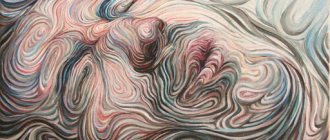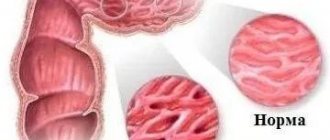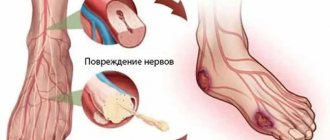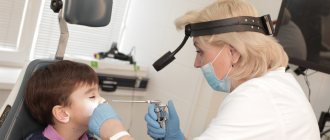Narcolepsy is a disease of the central nervous system resulting in a sleep disorder, which is characterized by daytime attacks of irresistible drowsiness and sudden falling asleep at the usual time of wakefulness, as well as attacks of cataplexy , that is, a sudden loss of muscle tone with clear consciousness, insomnia, night sleep disturbances, appearances when falling asleep and waking up hallucinations . Sometimes there is short-term paralysis of the body immediately after waking up.
Causes
Until now, doctors have not established the exact causes of the disease, but narcolepsy occurs as a result of a lack of orexin (a biologically active substance in the brain), which regulates the processes of falling asleep and waking up.
Presumably the causes of narcolepsy are:
- hormonal imbalance;
- injuries, brain infections;
- hereditary predisposition;
- diabetes;
- autoimmune diseases;
- overwork;
- psychological trauma;
- pregnancy.
Treatment
Symptoms of narcolepsy can usually be controlled or alleviated so that those with the condition experience symptoms less frequently and can lead fairly normal lives. If you are diagnosed with narcolepsy, your treatment plan will include several components: medications, behavioral therapy and the organization of certain activities in the patient's environment.
Medications.
The types, number, and severity of symptoms determine which medications need to be used to treat narcolepsy. Only a doctor can prescribe medications that can effectively control excessive daytime sleepiness, cataplexy, hallucinations and sleep disorders.
Behavioral therapy.
Treatment for narcolepsy will likely require not only the use of medications, but also the organization of activities that will help significantly improve your feelings of well-being.
- Maintain a regular sleep and wake schedule. Go to bed and wake up at approximately the same time every day.
- Regular short periods of napping during the day may be helpful.
- Be careful when performing activities that may be dangerous, such as driving or cooking; Try to plan your schedule so that you are alert during this time.
- Carefully follow your doctor's recommendations for taking medications. Tell him or her right away about any changes or problems with your medications.
It is difficult to control narcolepsy if your family, friends and colleagues do not understand the essence of the disease. Daytime sleepiness may be mistaken for laziness, depression, or loss of ability. Signs of cataplexy or dreaming while awake may be mistakenly considered a psychiatric problem. Understanding the symptoms of narcolepsy can relieve fears, shame, anger, and depression.
Therefore, if you suffer from narcolepsy, your doctor or you yourself should talk to your family members and reassure them that your behavior is not intentional or mentally abnormal. Family support is an important step in coping with the disease.
Tell your employers about the disease. Providing certain conditions at work will allow you to remain a profitable employee. If narcolepsy is interfering with your job, consider other available sources of income. If your child has narcolepsy, make sure their teachers are aware of the condition. Small adjustments in the classroom can have a huge impact on your child's self-esteem and ability to receive a good education.
Symptoms of Narcolepsy
Symptoms characteristic of narcolepsy are as follows:
- attacks of drowsiness that occur at any time of the day;
- short-term sleep at any time and anywhere (1-10 minutes);
- easy awakening on your own or after external influence;
- constant feeling of fatigue;
- memory impairment;
- decreased concentration;
- sudden loss of muscle tone and strength (catalepsy);
- the occurrence of hallucinations;
- sleep paralysis;
- involuntary muscle twitching.
If you experience similar symptoms, consult your doctor
. It is easier to prevent a disease than to deal with the consequences.
Non-pharmacological treatment of narcolepsy
There are a number of non-pharmacotherapy interventions that can help with narcolepsy. However, most patients still need appropriate medications to reduce drowsiness and cataplexy.
Napping and sleep hygiene
Patients with narcolepsy benefit from one or two quality 20-minute naps during the day, although some patients benefit solely from long naps. For example, taking a nap around lunchtime (1:00–2:00 p.m.) often results in one to three hours of improved alertness and alertness, thereby reducing the need for stimulants in the afternoon. If this helps, a short nap during the day at work or school is recommended.
Sleep deprivation can worsen the symptoms of narcolepsy, so you should maintain a regular and adequate sleep schedule.
Medicines and substances
Certain medications and substances should be avoided due to their potential to worsen the symptoms of narcolepsy. Among those that can increase daytime sleepiness: benzodiazepines, opiates, antipsychotics (neuroleptics), alcohol. Some, such as theophylline or excess caffeine, can cause insomnia, which ultimately results in increased daytime sleepiness.
Prazosin and other alpha-1 adrenergic receptor antagonists worsen symptoms of cataplexy.
Psychosocial support
Patients suffering from narcolepsy face various psychosocial and work-related problems throughout their lives, resulting in difficulties in meeting economic and social responsibilities. They also have the added burden of overcoming misconceptions about the causes and involuntary nature of narcolepsy symptoms.
Common misconceptions (even among health care providers) are that sleep attacks and cataplexy are manifestations of poor motivation, denial, or avoidance. Therefore, patients are usually advised to participate in support groups that focus on coping skills and identifying social support resources for administrative and medical issues.
Staying healthy with narcolepsy
Psychiatry
Patients with narcolepsy are at increased risk of comorbid mental health conditions—especially depression and anxiety. You should be screened for depression at least once every one to two years.
The Patient Health Questionnaire (PHQ-2) is recommended because it is quick, fairly sensitive, and does not have the disadvantages of other screening tools like the PHQ-9, which contain unnecessary questions related to fatigue, problems concentrating, and fragmented sleep. The PHQ-2 questionnaire contains only two questions:
- During the past month, have you often felt overwhelmed, depressed, or hopeless?
- During the past month, have you often been bothered by a lack of interest or enjoyment?
The cardiovascular system
Narcolepsy is associated with higher than expected blood pressure levels, which is only partly due to the use of stimulants and other medications.
In a study that performed 24-hour ambulatory blood pressure measurements in adult (median age 32–41 years) patients (n=160) with narcolepsy type 1, the prevalence of hypertension was 41% among untreated patients and 58% among those receiving stimulant medications.
Patients with narcolepsy are also more likely to have obesity and diabetes.
Assessing and modifying cardiovascular risk factors is an important component of health maintenance in patients with narcolepsy.
Obesity
Overweight and obesity are common in narcolepsy. This is likely due to hypocretin deficiency, but it remains unclear whether obesity is associated with low basal metabolic rate, decreased physical activity, or increased caloric intake.
Significant weight gain of 9–14 kg is not unusual during the onset of narcolepsy in children, even without obvious changes in food intake, which is why a decrease in metabolic rate is a likely cause.
Regular exercise, limiting calorie intake, and consultation with a nutritionist are recommended to develop a specific weight loss plan.
Prevention
To prevent the disease, patients are recommended to:
- maintain a nightly sleep schedule;
- exercise regularly;
- avoid emotional and physical overload;
- limit the consumption of coffee, strong tea, heavy foods;
- avoid taking medications that affect sleep quality;
- promptly treat sleep disorders.
This article is posted for educational purposes only and does not constitute scientific material or professional medical advice.
Pharmacological treatment of narcolepsy
For patients with narcolepsy accompanied by increased daytime sleepiness, the following medications are recommended:
- modafinil;
- if increased daytime sleepiness persists, an increased dose of modafinil or methylphenidate is used;
- If excessive daytime sleepiness does not respond to pharmacotherapy, the following medication options should be considered:
- sodium oxybutyrate;
- modafinil and sodium hydroxybutyrate;
- methylphenidate and sodium hydroxybutyrate;
- pitolisant;
- a combination of methylphenidate and modafinil;
- armodafinil.
For patients suffering from narcolepsy with cataplexy, the following medications are recommended:
- sodium hydroxybutyrate;
- venlafaxine;
- tricyclic antidepressants such as clomipramine and other antidepressants including fluoxetine, citalopram and sertraline;
- selegiline;
- pitolisant.
For patients suffering from narcolepsy with sleep disturbances at night, the following medications are recommended:
- sodium hydroxybutyrate, including in combination with modafinil.
For patients suffering from narcolepsy with hallucinations and night paralysis, the following medications are recommended:
- sodium hydroxybutyrate or antidepressants.
Diagnostics
Doctors may initially misdiagnose narcolepsy. This is because it resembles other conditions such as:
- psychological disorder
- sleep apnea
- restless legs syndrome
It may take 5-10 years to confirm the diagnosis.
To determine whether a person has narcolepsy, the doctor will:
- study anamnesis and sleep history
- will conduct a physical examination
- will perform sleep studies such as polysomnography and multiple sleep latency testing
Sleep studies can confirm the diagnosis of narcolepsy.
The person will undergo polysomnography and sleep in the clinic overnight while the machine measures sleep patterns.
The multiple sleep latency test will take place several hours after the polysomnography.
Questions your health care professional may ask include:
- Do you sleep most of the day?
- How many hours do you sleep at night?
- Do you feel rested after waking up?
- Does sleep refresh you?
- Do you have unusual sensations when you fall asleep?
- Have you ever been unable to move when you fell asleep or when you woke up?
- Do you have muscle weakness or collapse when you laugh or get angry?
Keeping a sleep diary can also help in diagnosis.
Manifestations of paroxysm of irresistible drowsiness
Symptoms of the disease first appear in adolescents or young adults, either immediately, or worsen gradually as they grow older:
- Strong desire to sleep during the day, despite a sufficient amount of sleep at night. Such irresistible drowsiness interferes with normal activity, as it is accompanied by lethargy, foggy thinking, apathy, and difficulty concentrating. A person feels “broken,” “squeezed like a lemon,” and constantly tired. He is not in the mood, he is constantly irritated, cannot remember important information, and loses motivation. At any moment and under any circumstances, the patient can fall asleep, and such attacks occur several times a day. It is easy to wake him up and after waking up he, just for a while, feels rested.
- Disturbance of normal sleep at night - frequent awakenings or insomnia.
- Cataplexy – with strong emotions (surprise, laughter, joy, rage, etc.) a sudden loss of muscle tone occurs. A person may fall due to weakness in the legs, arms become numb, and the head “falls.” Such an attack can last a moment or last half an hour.
- When falling asleep or waking up, terrible, very believable hallucinations arise, visual or in the form of sensations and sounds. They scare and even threaten.
- Sleep paralysis - waking up, the patient cannot move or say anything, but thinks quite adequately.
- Automaticity – performing actions “on autopilot”. A person may fall asleep but continue what he was doing while awake without realizing it. This is dangerous, since sleep can occur while driving a vehicle, cooking, etc.
People suffering from narcolepsy also complain of memory loss, double vision, and headaches.
If you have the above symptoms, you should consult a specialist for diagnosis and subsequent treatment. Unfortunately, it is impossible to completely get rid of this neurological disorder, but it is quite possible to correct it and thereby improve the quality of life.
Prognosis for narcolepsy
Narcolepsy is a disease that occurs over a long period of time. Symptoms of this disease can vary in severity throughout a person's life. Symptoms usually worsen over time or become stable. However, drowsiness may become a permanent condition that requires medication. In some cases, cataplexy and other symptoms may decrease or disappear over time.
Various factors influence the symptoms a patient experiences, including:
- irregular sleep-wake schedule;
- the use of substances that affect the central nervous system;
- brain infections;
- sleep disorders such as sleep apnea, periodic limb movement syndrome, etc.
To improve the quality of life and reduce the symptoms of the disease, you need to regularly visit the doctor, follow a clear sleep-wake schedule, and use the medications prescribed by the doctor.
A doctor who specializes in sleep disorders can recognize the symptoms of narcolepsy, evaluate you, and prescribe treatment.
What is narcolepsy
Narcolepsy is a neurological sleep disorder, Narcolepsy, National Sleep Foundation, in which the brain cannot control sleep and wakefulness.
The disease occurs very rarely Narcolepsy, National Sleep Foundation - in one person in 2,000–3,000, equally common in men and women. Narcolepsy develops in adolescence, but can go undetected for a long time. Sometimes it progresses quickly, over a few weeks, and sometimes it takes years after the first signs to become stable.
How to treat narcolepsy?
Narcolepsy is currently incurable. Patients are given symptomatic treatment, which allows them to slightly improve their quality of life. To reduce daytime sleepiness, stimulants are prescribed, as well as drugs that reduce the manifestations of cataplexy and sleep paralysis.
Treatment of the disease should be carried out in specialized clinics. At the Sleep Medicine Center at the Rehabilitation Clinic in Khamovniki, specialists have been helping people fight a variety of sleep disorders for many years.
Intense narcolepsy and frequent attacks of cataplexy limit life in society, and episodes of cataplexy are even life-threatening. Patients are at risk when driving a car, working with moving machinery, and even when preparing food.
Where does narcolepsy come from?
The exact cause of this disease is still unknown.
However, in people with type 1 narcolepsy, the brain produces little hypocretin (also known as orexin), a neurotransmitter that helps regulate sleep and wakefulness. Scientists suggest The Trouble with Tribbles: Do Antibodies Against TRIB2 Cause Narcolepsy? that the deficiency occurs due to an attack by the immune system on the brain cells that synthesize this substance. However, in type 2 narcolepsy, hypocretin levels do not decrease.
Researchers are considering other causes of the disease:
- genetic predisposition to Narcolepsy;
- brain injuries;
- vaccine Risk of narcolepsy in children and young people receiving AS03 adjuvanted pandemic A/H1N1 2009 influenza vaccine: retrospective analysis AS03 against swine flu.
However, all these theories require confirmation.









